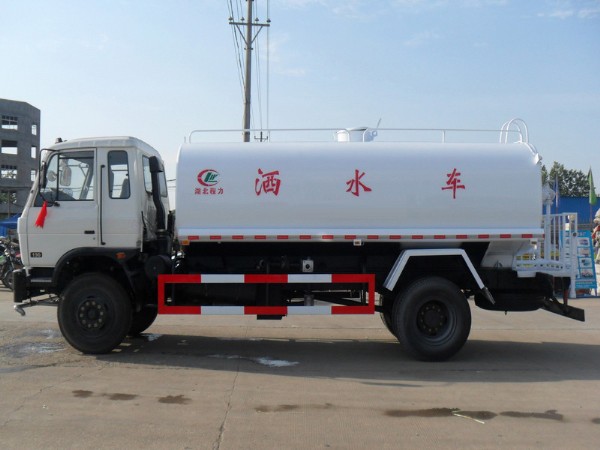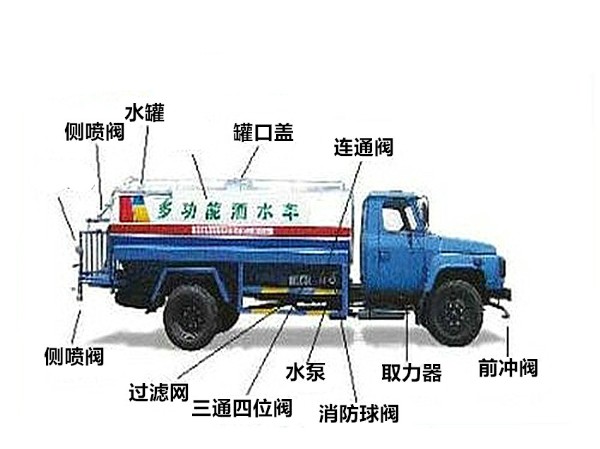Sprinklers, also known as water tankers, water trucks or sprayers, play a pivotal role in urban construction.

The sprinklers that are commonly seen are sprayed on the green belts on both sides of the city road or in the middle. However, in addition to cleaning and maintaining the green belts, the sprinklers are also used in the construction of construction companies, high-rise buildings, and various road areas. Big application. In addition to flushing, sprinklers also have functions such as pesticide spraying, guardrail rinsing, water transport, drainage, and emergency firefighting. Therefore, in terms of function, sprinklers can be classified into green sprinklers, water sprinklers, and fire sprinklers.

Common sprinklers generally consist of chassis, tanks, piping systems, sprinklers, cabs, power take-offs, sprinklers, etc. The piping system is a system of pipes, ball valves, filters, and outlets. In two-step operation, the first step is to absorb water. The specific operation steps are: after parking, remove the water-absorbing rubber hose from the walk-out box and swing the hose backwards until the hose is not bent. Then, insert the water-absorbing hose into the water as deep as possible, and keep the difference between the tube and the liquid level always greater than 3cm. Push the four-way valve handle to the direction perpendicular to the ground, and then put the transmission into neutral, start the engine and separate. Clutch, pull the force again, the pump starts running. When the liquid level reaches the middle of the sight glass, quickly pull the suction hose away from the water or close the four-way valve. In this way, the water absorption step is completed.
The second step is spraying. First, pull the rear handle of the four-way valve to the direction parallel to the ground, open the ball valve you want to spray (front flush, back spray, side spray, shower), and then start the engine and put the transmission into gear. Position the power take-off switch back and pull it out to pull the force. Then the clutch is disengaged, the pump starts to run, and the water sprinkling starts. After the sprinkled water is finished, the gear should be immediately released and the sprinkler pump should be stopped.
Steel forgings improve the internal structure and mechanical properties of the forgings during the forging process. Therefore, forgings have high mechanical strength, are not easy to break, and improve toughness. They are generally used in parts that require large stress, or parts with harsh working environments, such as gears or engine shafts. In addition to improving mechanical properties, forging has the advantages of high utilization of materials and high productivity. For some parts that require precision assembly or high precision, it can be achieved by secondary precision CNC machining. However, due to the characteristics of the forging process, forging is not suitable for the production of workpieces with complex shapes, or requires a relatively large amount of subsequent CNC machining to achieve products with complex shapes.
For forged parts, the most important are the three processes of mold development, forging processing and secondary precision CNC processing. And these three processes are all completed in-house, we can better ensure product quality and production delivery. We take quality first and service first for our customers.

Steel Forging Parts, Steel Forgings, Carbon Steel Die Forging, Carbon Steel Forging Parts, Carbon Steel Forgings, Iron forgings, Cast Iron Forging, Steel Forging, Iron Forgin, Metal Forging
Shenzhen SCZY Technology Co.,Ltd , https://www.szsccasting.com